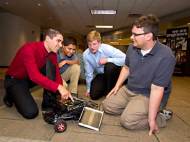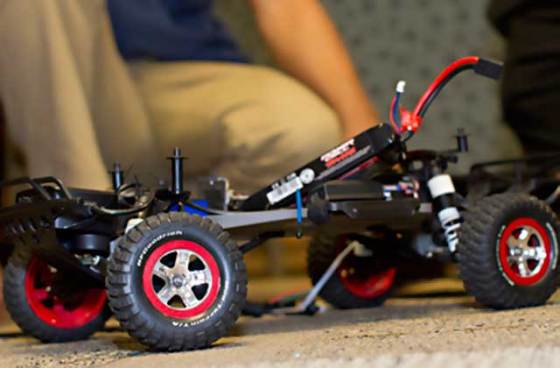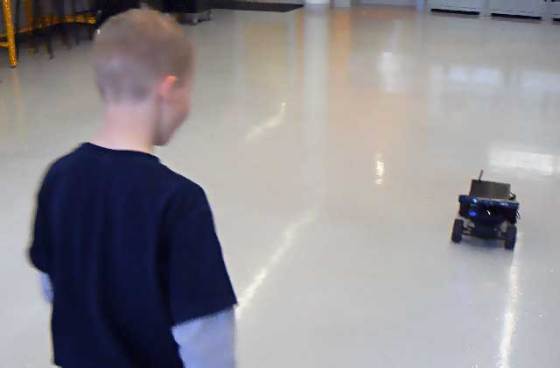Infinibotics Cosmo – robotic toy car meant for edutainment
 A group of Arizona State University (ASU) engineering students recently got a boost for Infinibotics – a business startup focused on development of an edutainment toy able to engage with children. They developed Cosmo – a robotic toy car which serves as play buddy and a tool for teaching pre-school-age children basic math and spelling through games programmed into its software.
A group of Arizona State University (ASU) engineering students recently got a boost for Infinibotics – a business startup focused on development of an edutainment toy able to engage with children. They developed Cosmo – a robotic toy car which serves as play buddy and a tool for teaching pre-school-age children basic math and spelling through games programmed into its software.
The team includes computer systems engineering graduate students Edward Andert and Roger Dolan, computer science graduate students Shang Wang and Bryce Holton, and mechanical engineering senior Austin Deveny. Their faculty adviser is Aviral Shrivastava, an associate professor in the School of Computing, Informatics and Decision Systems Engineering.
Infinibotics originates from an idea Shrivastava came up with two years ago to teach students in one of his senior capstone engineering design courses to apply basic computer systems engineering design principles to producing a robotic toy car.
Using image-processing algorithms, ASU students were first instructed to follow a person walking so they could understand the mechanics of what they wanted to enable the vehicle to do. Students in one class assembled the necessary components to make the car work, while another class developed the computer software for detection and tracking, enabling the car to follow behind someone on the path they walked.
After showcasing the robot car at ASU’s annual Engineering Open House last spring, students found that children liked interacting with the robot. When Shrivastava’s five-year-old daughter, Lehka, played with the toy, she asked her father if the car could be made to stop when she told it to and if it could play spelling games with her.
Her questions and feedback from others who saw the robot at the open house sparked a new phase of the project – developing the robot car as an educational toy for children. The students have already altered the robot’s software to enable it to follow voice commands such as “Cosmo, follow” and “Cosmo, stop”.
The Infinibotics team that formed to turn the project into a product is designing the next Cosmo prototype to provide more interactive features. Ideas include enabling the robot toy to play hide-and-seek and treasure-hunt games that present simple math and spelling challenges. The team expects that the development of these features should take them the better part of the next year. You can see planned changes in the following video.
Although I had my own toys which helped me learn new things, I never considered them as nothing more but toys. On the other hand, Cosmo can be programmed to perform new tasks and it offers physical interaction, rather than information interaction found in educational video games. This could translate into a much stronger and more meaningful engagement with younger children.
What are your opinions about robots being used to entertain and educate children? While it could be used as an aid in teaching, could it really replace a friend, parent or a teacher? Leave your thoughts in the comment section bellow.











Leave your response!